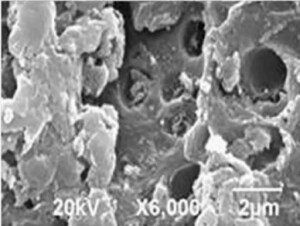In biological systems, the inner cell is a highly congested environment, which may result from the presence of macromolecules that may or may not be inert to biological reactions (macromolecular congestion), or from physical sequestration by elements such as fiber and membrane networks (confinement). Compared with in vitro, in vivo confinement in cell can considerably affect the behavior of proteins and nucleic acids (conformation, stability, folding kinetics, etc.).

The LLB/MMB biophysics team is interested in the influence of macromolecule crowding on :
- protein conformations (influence of pressure, hydrophobic polymers), stability, reduced mobility and implications for related physiological factors, coil-helical transition of polypeptide chains,
- nucleic acid folding and compaction,
- interactions between cell membranes and various molecules (peptides, proteins such as dystrophin, ions, gases), which are at the origin of many biological processes (muscle function, DNA double-strand break repair).
One bacterial model in particular is being studied, the Hfq protein, which affects genome dynamics, with direct implications for the efficiency of the cellular machinery (replication, transcription, translation). Interactions of phospholipid membranes with nanopores, amyloid proteins and complexes containing DNA fragments and divalent cations (Lipoplexes) that can act as gene therapy agents are also studied. Neutron diffraction also gives access to the crystallographic structure of proteins, particularly when deuterated.
These various studies are approached via a variety of biochemical, molecular biological and biophysical methods, including static scattering (DXPA and DNPA), inelastic neutron scattering (incoherent quasi-elastic scattering using isotope substitution, elastic scans), molecular dynamics, circular dichroism (conventional or synchrotron), infrared spectroscopy, rheology and imaging (fluorescence, electron microscopy or atomic force microscopy). The study of membranes is also covered by surface neutron and X-ray reflectivity.











